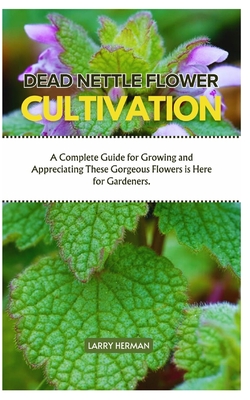You are here
Back to topDead Nettle Flower Cultivation: A Complete Guide for Growing and Appreciating These Gorgeous Flowers is Here for Gardeners. (Paperback)
$8.69
Usually Ships in 1-5 Days
Description
Dead Nettle flowers, scientifically named Lamium, are part of the mint family (Lamiaceae) and include various types of herbaceous plants. Dead Nettle blossoms, despite their name, are not actual nettles and do not have stinging hairs like their close relatives. These plants are well-known for their unique and appealing appearance, which makes them a favored option in gardens and natural settings.
Here is a concise overview of Dead Nettle flowers: 1. Botanical Characteristics:
- Dead Nettle plants usually feature heart-shaped or oval leaves with serrated edges. The leaves frequently exhibit a velvety feel.
- The square stems, a distinctive trait of the mint family, are often purplish or green and may be covered with small hairs.
- The flowers of Dead Nettles are tubular and can be white, pink, or purple. They are organized in whorls, resulting in an appealing, spiky look.
2. Cultural Significance: Ornamental Use: Dead Nettle blooms are grown for their decorative appeal. They are commonly used in landscaping to enhance the visual appeal of gardens and borders by introducing color and texture.
- Dead Nettles are commonly utilized as ground cover in gloomy regions because of their spreading nature and capacity to create thick mats.
3. Growing Conditions: - Habitat: Dead Nettles flourish in diverse habitats, with certain species preferring dark forests and others thriving in open meadows.
- These plants often thrive in damp, well-drained soil and may endure partial to full shade.
4. Wildlife and Ecology: - Dead Nettle plants attract pollinators like bees and butterflies due to their flowers, which serve as a valuable food source for these insects, making them a good addition to gardens from an ecological standpoint.
- Adaptations: Certain species of Dead Nettles have developed the ability to generate nectar in low-light environments to attract pollinators in darkened places.
5. Medicinal and Culinary Uses: - Traditional Medicine: Historically, several types of Dead Nettle have been utilized in traditional medicine for its claimed anti-inflammatory and diuretic effects.
Edible portions of Dead Nettle plants can be consumed in salads or used to make teas. It is crucial to accurately identify the species before consuming it.
Dead Nettle blooms enhance the visual appeal of gardens and support the ecological balance of natural environments because to their distinctive features and capacity to thrive in various conditions. Whether valued for their aesthetic appeal or environmental advantages, these plants enhance the attractiveness of different environments.
